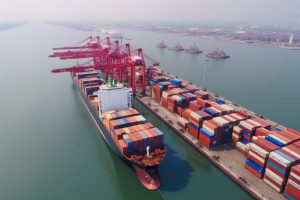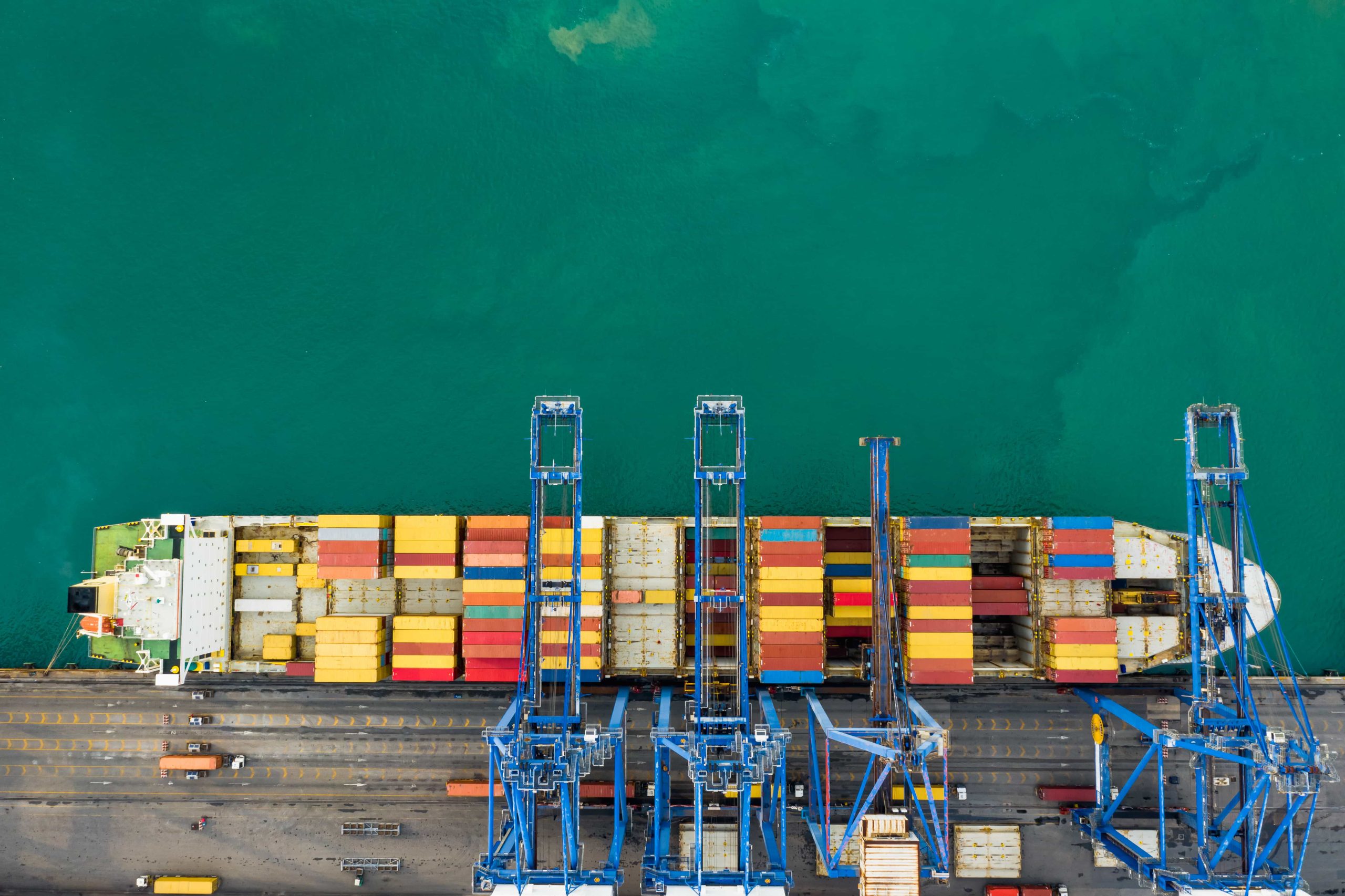Container vessels are at the heart of modern global trade, designed to transport standardized containers filled with a wide variety of goods. These vessels have revolutionized the shipping industry by allowing for efficient, safe, and cost-effective transportation of cargo across vast distances. They are key players in facilitating the movement of consumer goods, industrial products, and raw materials worldwide. Container vessels support economies, businesses, and supply chains by enabling the swift movement of goods from port to port, driving globalization and international commerce.
Container ships transport a broad array of goods, from electronics, clothing, and automotive parts to chemicals, perishables, and machinery. These items are packed into containers, which are standardized for easy loading, unloading, and transfer between different modes of transport. The versatility of container ships allows them to serve a variety of industries and meet the needs of consumers and businesses alike. The flexibility of containerized shipping enables it to move both high-volume consumer products and specialized, valuable shipments efficiently.
Understanding container vessel operations and management is crucial for optimizing the efficiency, safety, and sustainability of shipping activities. From the design and construction of vessels to their operational management, effective oversight ensures that container ships can meet global trade demands while minimizing environmental impact. With the continuous growth in international trade, staying updated on best practices, technologies, and regulations governing container vessels is essential for professionals involved in logistics, shipping, and maritime industries.
Design and Types of Container Vessels
Basic Design Features of Container Ships
Container vessels are characterized by their large, boxy structure, designed to carry standardized shipping containers. The ships feature cargo holds and external areas called “cell guides” where containers are stacked, often up to several stories high. This design maximizes the use of available space, ensuring that containers are securely stowed during transit. Container ships typically have a relatively shallow draft, which allows them to navigate shallow ports, although this varies with vessel size.
Different Types of Container Vessels by Size and Capacity
Container vessels come in various sizes, each suited to different trade routes and cargo capacities. The types of container vessels by size include:
- Feeder Ships: Smaller vessels, typically carrying 1,000 to 3,000 TEUs (Twenty-Foot Equivalent Units), used to transport containers between smaller ports and larger hub ports.
- Panamax Ships: These ships are sized to pass through the Panama Canal, with capacities typically ranging between 4,000 and 5,000 TEUs.
- Post-Panamax Ships: Larger vessels that cannot pass through the Panama Canal (pre-expansion), with capacities ranging from 5,000 to 10,000 TEUs.
- Ultra-Large Container Vessels (ULCVs): The largest vessels capable of carrying over 18,000 TEUs. These ships operate on long-haul routes and typically dock at major international ports.
Source: www.inboundlogistics.com
Evolution of Container Ship Design Over Time
Container ship design has undergone significant evolution, driven by advancements in technology and the increasing demand for larger ships to carry more cargo. Initially, container vessels were relatively small, but with the rise of global trade and the demand for economies of scale, ships have grown substantially in size. The development of larger ships, more efficient engines, and optimized container stacking systems have allowed shipping companies to reduce costs per unit of cargo, making containerized shipping one of the most cost-effective transportation methods.
Size Categories of Container Vessels
Overview of Various Container Ship Sizes and Their Cargo Capacities
Container vessels are typically categorized based on their size, with capacities ranging from small feeder ships to massive ultra-large vessels. Here’s a breakdown:
- Feeder Ships: 1,000 to 3,000 TEUs
- Panamax Ships: 4,000 to 5,000 TEUs
- Post-Panamax Ships: 5,000 to 10,000 TEUs
- Ultra-Large Container Vessels (ULCVs): 10,000 to 24,000+ TEUs
The capacity of the vessel determines the types of cargo and ports it can service. Smaller ships are ideal for regional routes, while larger ships dominate long-distance international trade routes.
Employment and Trade Routes Associated with Different Sizes
Different sizes of container vessels are suited to specific trade routes. Feeder ships typically service regional routes, acting as connectors between smaller ports and large international hubs. Panamax and Post-Panamax vessels primarily operate on trans-oceanic routes, with Panamax ships used in regions where the Panama Canal is a key part of the shipping route. Ultra-large container vessels operate on major global trade routes, transporting goods between Asia, Europe, and the Americas, taking advantage of economies of scale.

Cargo Operations
Planning and Control of Cargo Loading and Unloading Operations
Efficient cargo handling is essential to minimize turnaround time in ports. Loading and unloading must be carefully planned, with consideration for the types of containers (e.g., refrigerated containers, hazardous goods), as well as their weight distribution. Advanced planning ensures that containers are stacked in the most efficient manner to prevent damage and optimize space. Coordination with port authorities, terminal operators, and logistics companies ensures that cargo operations are conducted smoothly.
Safety Measures During Cargo Operations
Cargo operations pose various risks, including accidents during loading or unloading, cargo shift, and damage to the vessel. Safety measures include strict protocols for securing containers, inspecting equipment such as cranes and gantries, and ensuring that containers are stacked safely according to their weight and type. Crew training is essential to mitigate risks and ensure that safety standards are followed.
Role of Terminal Operators in Cargo Handling
Terminal operators play a critical role in managing the logistics of cargo loading and unloading. They oversee the movement of containers from ships to storage areas, coordinate the transportation of containers to inland destinations, and ensure that port facilities are properly equipped and maintained. Their role is essential to ensure that container vessels operate efficiently and without delays.
Loading and Unloading Procedures
Step-by-Step Guide to Loading Containers
- Preparation: The cargo holds and deck areas are inspected, and container positions are planned.
- Loading: Containers are moved from the port terminal to the vessel, often using cranes or automated systems.
- Stacking: Containers are loaded and stacked in designated locations to maintain vessel stability.
- Securing: Containers are secured using twist locks, lashing, or other safety measures to prevent movement during transit.
Unloading Procedures and Equipment Used
Unloading procedures are similar to loading but involve the removal of containers from the ship to the dock or transport vehicles. Specialized equipment, such as quay cranes, straddle carriers, and container forklifts, are used to safely move containers. Automation is increasingly used to speed up the process and minimize the risk of human error.
Challenges and Solutions in Cargo Operations
Common challenges include poor weather conditions, delays caused by congestion at ports, and equipment malfunctions. Solutions often involve adopting advanced technologies like port automation, improved cargo management systems, and better forecasting techniques to anticipate cargo flows. Additionally, close coordination among stakeholders is essential to overcome these challenges.
Management Practices
Key Aspects of Container Vessel Management
Effective container vessel management involves overseeing various operations, including route planning, maintenance, crew management, and compliance with regulations. Managers must ensure that vessels are maintained in peak operational condition, with regular inspections and repairs. Optimizing fuel consumption and maintaining cargo security are also critical elements of successful management.
Maintenance of Ship Equipment and Infrastructure
Container vessels require regular maintenance of their engines, hulls, cargo handling systems, and safety equipment. This includes routine inspections, dry-docking, and repairs to ensure the vessel remains seaworthy and compliant with international regulations. Proactive maintenance is crucial to minimizing downtime and reducing operational costs.
Importance of Crew Training and Safety Protocols
Crew members must undergo extensive training to handle the complexities of modern container vessels. This training includes knowledge of cargo operations, safety procedures, and emergency response actions. Safety protocols, such as regular drills, equipment checks, and safety briefings, are essential to ensure the crew can effectively manage potential emergencies.
Recent Developments in Container Vessel Operations
Adoption of Artificial Intelligence in Shipping Operations
Artificial intelligence (AI) is transforming container vessel operations by automating routine tasks, improving route optimization, and enhancing predictive maintenance. AI can analyze vast amounts of data to optimize fuel consumption, predict equipment failures, and even automate container loading and unloading processes. This technology is contributing to greater efficiency and cost savings in container shipping.
Industry Initiatives Towards Sustainable Shipping Practices
The shipping industry is increasingly adopting sustainable practices, such as reducing emissions, using eco-friendly fuels, and optimizing vessel design for energy efficiency. There is a growing emphasis on reducing the environmental impact of container vessels, particularly through the use of alternative fuels like LNG and hydrogen, as well as initiatives to reduce carbon emissions from operations.
Conclusion
Container vessels are a vital component of global trade, responsible for transporting large quantities of goods across the world. Understanding their design, types, cargo operations, and management practices is essential for anyone involved in the shipping and logistics industry. From loading and unloading operations to crew training and maintenance, every aspect of container vessel operations is designed to maximize efficiency and safety.
As global trade continues to expand, the future of container vessels will likely see further advancements in automation, sustainability, and technology integration. Efforts to reduce environmental impact will play a significant role in shaping the industry, while innovations in AI and machine learning will continue to streamline operations and improve decision-making.
The maritime industry must continually innovate to improve the safety, efficiency, and sustainability of container vessel operations. By embracing new technologies, adopting best practices, and investing in crew training, the industry can address the challenges it faces and remain competitive in an ever-evolving global trade environment.



